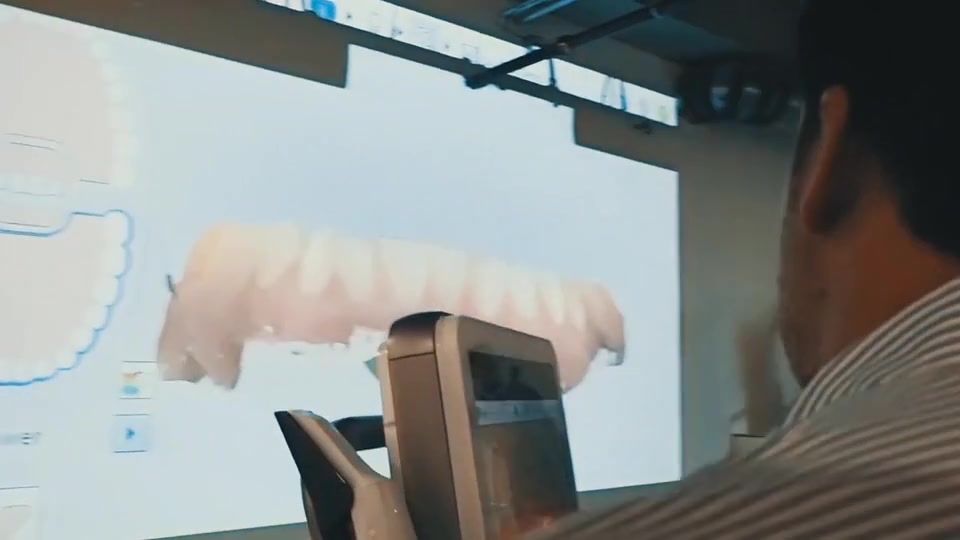Duration: 1 hour, 9 minutes, 25 seconds
Author: Dr. Sascha A. Jovanovic
NARRATED Staged Horizontal Ridge Augmentation using GBR in a Severely Resorbed Anterior Mandible
Imagine you are suffering from a severely resorbed anterior mandible, and you’re desperate to restore your smile and regain your confidence. Thanks to modern dental techniques, there is hope for achieving a natural-looking, stable result through staged horizontal ridge augmentation using guided bone regeneration (GBR). In this article, we will explore the fascinating world of GBR and how it can transform your dental health.The Procedure: A Closer Look
When it comes to addressing a severely resorbed anterior mandible, staged horizontal ridge augmentation using GBR is a proven technique. The procedure begins by placing a titanium mesh over the resorbed ridge. This mesh acts as a barrier, preventing soft tissue from growing into the graft site and interfering with the bone regeneration process. With the titanium mesh in place, the next step is to fill the resorbed ridge with a bone graft material. This material serves as the foundation for new bone growth, promoting regeneration and creating a stable framework for future dental implants or restorations.The Benefits of a Staged Approach
One of the key advantages of a staged approach to horizontal ridge augmentation is the ability to gradually increase the width of the ridge. This gradual increase minimizes the risk of complications and ensures a stable and predictable result. By allowing the ridge to gradually expand, the surrounding soft tissue can adjust and adapt, reducing the chances of tissue necrosis or implant failure. Additionally, the staged approach provides an opportunity for thorough monitoring and adjustment throughout the process, ensuring optimal outcomes for each patient’s unique situation.Understanding the Rationale: Why GBR?
To fully appreciate the benefits of horizontal ridge augmentation using GBR, it’s important to understand the rationale behind this technique. The goal of GBR is to create a favorable environment for bone regeneration by providing adequate space and protection during the healing process. The titanium mesh acts as an effective barrier, keeping soft tissue away from the graft site. This barrier allows the bone graft material to integrate and stimulate new bone growth without disruption. By preserving the graft site from unwanted invasion, GBR helps to ensure a successful outcome with long-term stability.The Power of Narration
What sets this video apart is its narrated format. The narrator provides detailed explanations of each surgical step, enabling viewers to fully grasp the intricacies of the procedure. By understanding the rationale behind the chosen technique, patients can make informed decisions about their treatment, empowering them to actively participate in their dental care. This narration also serves as a valuable educational resource for dental professionals. By hearing the thought process and reasoning behind each step, dental professionals can improve their own knowledge and skills, enhancing their ability to provide excellent care for their patients.Conclusion
In conclusion, staged horizontal ridge augmentation using GBR is a remarkable technique for addressing severely resorbed anterior mandibles. By placing a titanium mesh as a protective barrier and utilizing bone graft material for regeneration, dental professionals can achieve stable and predictable results. The narrated video provides a comprehensive understanding of the procedure, allowing patients and dental professionals alike to appreciate the intricacies and rationale behind the technique. With this knowledge, individuals can confidently explore GBR as a potential solution for their dental needs.Frequently Asked Questions:
Q1: Is the staged horizontal ridge augmentation procedure painful?A1: Every individual’s pain threshold is different, but the procedure is typically performed under anesthesia to ensure patient comfort. The post-operative discomfort can be managed with prescribed pain medication. Q2: How long does the healing process take?
A2: The healing process can vary depending on various factors, including the patient’s overall health and the extent of the resorption. On average, it may take several months for the bone graft material to fully integrate and new bone to form. Q3: Are there any risks or complications associated with staged horizontal ridge augmentation using GBR?
A3: As with any surgical procedure, there are potential risks and complications, such as infection or graft failure. However, with proper planning and monitoring, these risks are minimized. Q4: Can anyone undergo staged horizontal ridge augmentation using GBR?
A4: The suitability of the procedure depends on various factors, including a patient’s overall health, bone density, and gum condition. A thorough examination and consultation with a qualified dental professional is essential to determine if the technique is appropriate for an individual’s specific situation. Q5: How long do the results of staged horizontal ridge augmentation using GBR last?
A5: When performed by a skilled dental professional and with proper post-operative care, the results of staged horizontal ridge augmentation using GBR can be long-lasting. However, routine dental care and maintenance are essential to ensure the longevity of the restored ridge. Remember, every case is unique, and it’s crucial to consult with a dental professional specializing in GBR to explore whether this technique is suitable for your dental needs. With proper guidance and expertise, achieving a stable and aesthetically pleasing result is within reach.





Add comment